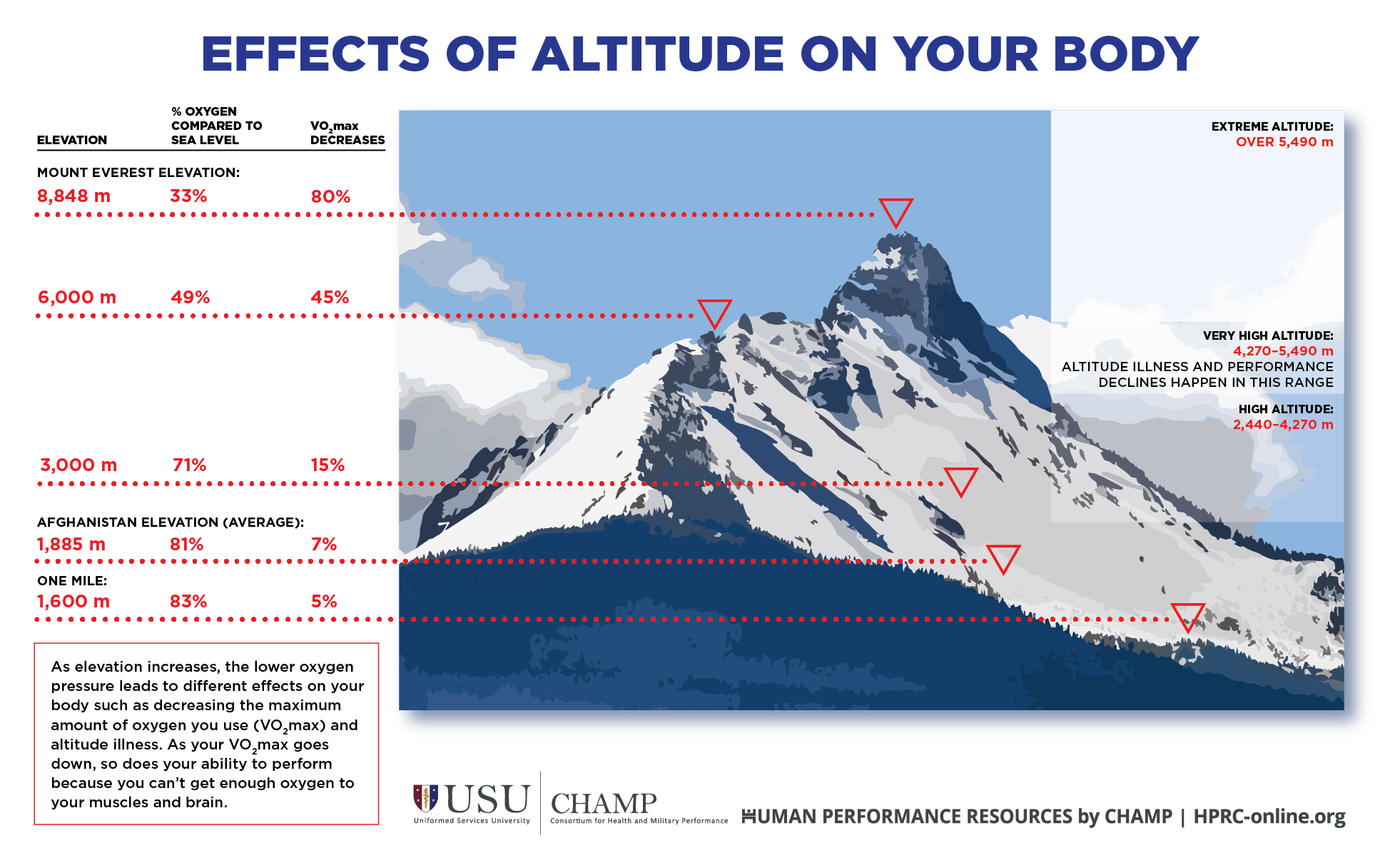
A person with pulmonary oedema may drown if their lungs fill with too much fluid. In most cases, both conditions occur at the same time.

There are two main types of severe altitude sickness: high altitude pulmonary oedema (fluid within the lungs) and high altitude cerebral oedema (fluid within the brain).

The initial symptoms of altitude sickness can include: The only sure method of prevention is to take plenty of time to ascend. It is important to remember that being young and fit doesn't reduce your risk, and just because you haven't experienced altitude sickness in the past, doesn't mean you are immune to the condition during future climbs. Men are at greater risk of altitude sickness than women, for reasons unknown. Ascending to heights greater than 2,500 m can trigger a range of symptoms including headache and vomiting. Acute altitude sickness arises after at least four hours spent at an altitude above 2,000 m. At intermediate altitude (1,500 to 2,500 metres above sea level) altitude illness is unlikely, though possible. In severe cases, fluid builds up within the lungs, brain or both. It is caused by gaining altitude too rapidly, which doesn't allow the body enough time to adjust to reduced oxygen and changes in air pressure, and causes hypobaric hypoxia (a lack of oxygen reaching the tissues of the body). Mountain climbers are at risk of developing altitude sickness (also known as mountain sickness), which may be harmful or even fatal if its onset is ignored.


 0 kommentar(er)
0 kommentar(er)
